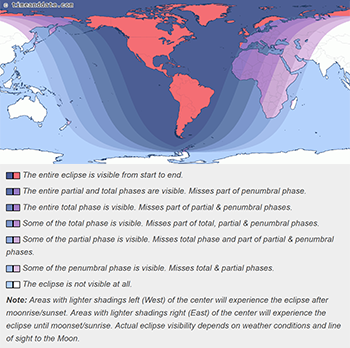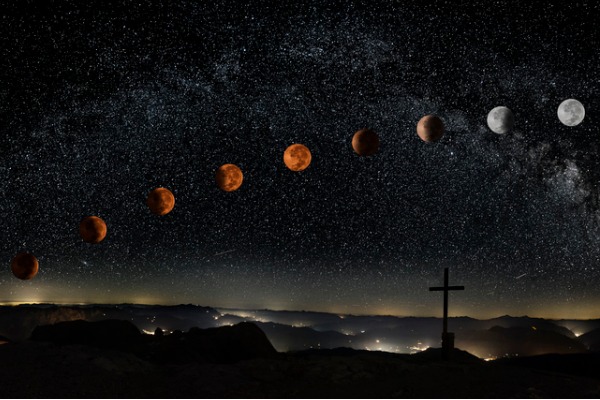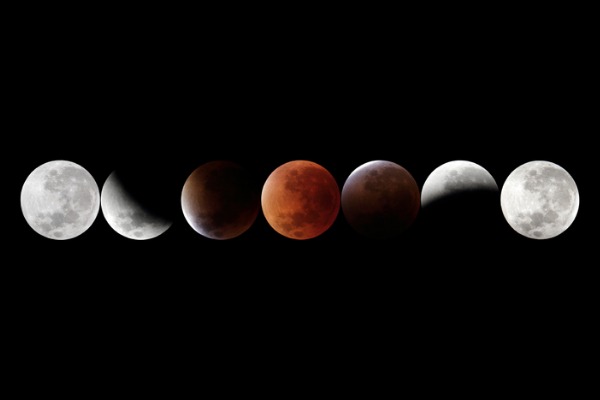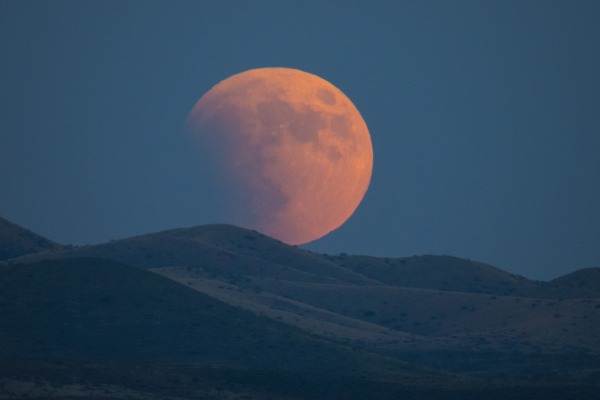Hello, stargazers. In a few short days, we will experience an incredibly rare and beautiful lunar event. As photographers, that means most of us will be up on a roof somewhere—in the middle of the night—trying to take a perfect photo before it disappears. Below is a list of the three things you need to plan before lunar eclipse photography.
Before we get started, it’s important to talk about why this event is such a big deal.
What is the Super Blood Wolf Moon Eclipse?
Without any context, we’d guess that “Super Blood Wolf Moon Eclipse” is the name of a bad rock band from the early 2000s or a Buffy The Vampire Slayer episode title. In reality, it’s neither of those things so let’s take a moment to unpack the name.
First, this is a “super moon” because it’s full and slightly closer to the earth than a normal full moon. Second, it’s a “blood” moon due to the impending eclipse; when the moon passes into the earth’s shadow, it takes on a copper color. Calling it blood red is a bit of an exaggeration, but there are certain factors that can enhance its vibrancy (for example, the presence of volcanic ash). On a related note, astronomy is the coolest. Finally, the word wolf is included because of the Native American tradition of calling January’s full moon a “wolf moon.” The name originates from the pack animals’ alarming habit of howling hungrily outside Native American settlements during the throes of winter.
Step 1: Figure Out Where & When To Shoot
This magnificent celestial event takes place this coming Sunday, January 20th into Monday, January 21st. At that time, the super moon and lunar eclipse will be fully visible in North and South America, Europe and Western Africa. If you don’t live in any of those

places, don’t despair; Central Africa and Eastern Asia will be able to see the partial eclipse.
The entire event takes 1 hour and 2 minutes but the “maximum eclipse” happens on January 21st at 12:12 am EST (Jan 21, 05:12 UTC). If you live in a major city, your best bet is to get as far away from its glowing lights as possible. In order to get a clear shot of the moon, you must eliminate the risk of light pollution. Borrow a friend’s car, hop on a train, or start walking. Whatever you do, remember that you have a very small window of time. Plan accordingly.
Step 2: Pick Your Telescope
Basic, Affordable, & Reliable
The Celestron National Park Foundation PowerSeeker 114AZ Telescope is a bare-bones, minimal telescope that’s reliable and gets the job done. It has a focal length of 900mm (f/8), standard finderscope, collapsible alt-azimuth mount, and SiO2 reflective optical coatings. It also has an adjustable aluminum tripod and no-tool setup; you can assemble this in the woods without lugging around hand tools. We recommend it for newcomers to lunar photography.

For Newly Serious Stargazers
The Celestron Nexstar 6SE SCT GoTo Telescope is definitely a step up from the PowerSeeker; it has a 6″ Schmidt-Cassegrain optical tube display (OTA), 25 mm 1.25″ eyepiece, 1.25″ star diagonal, and a StarPoint finderscope. It’s also easy to collapse and carry if you need to use it on-the-go.In addition to paying for higher quality gazing, you also get a few key value-added features. Arguably the most notable item on that list is NexStar+ which allows users to automatically align to over 40,000 celestial objects. This model will serve you well long after the Super Moon Lunar Eclipse.
Professional Views
We love the Celestron telescopes detailed above. However, if you’re a professional photographer interested in getting serious about interstellar photography, we recommend the Celestron Nexstar Evolution 8″ EdgeHD SCT GoTo Telescope. Whether you’re photographing a solar or lunar eclipse, meteor shower, or just want to peer into space, this model boasts superior pointing accuracy from horizon to horizon. Like the GoTo, the Nexstar Evolution has a built-in StarPointer Pro Finderscope and a 1.25” star diagonal. It also has Starsense AutoAlign, 2 x 1.25” Plossl Eyepieces, and remarkable EdgeHD 8” optics.

Step 3: Add A Camera And/Or Camera Adapter
Alter Your Smartphone For The Stars
As always, it’s important to take advantage of the assets you have. The Celestron NeXYZ Universal 3-Axis Smartphone Adapter fits any eyepiece from 30mm to 60mm in diameter; that includes the Celestron National Park PowerSeeker and Celestron Nexstar 6SE SCT GoTo Telescope listed above. Just attach it to the eyepiece of your telescope, tilt to adjust, and take photos of the vast expanse of the cosmos like you’d take pictures of your cat. From the great beyond to Instagram in 2 minutes flat; what a time to be alive.
Canon & Nikon Cameras For The Cosmos
We have good news if you’re part of the Nikon or Canon family. Both companies sell t-rings that affix your camera to the main focus of a Celestron telescope (important note: the Canon ring is only for 35 mm Canon EOS Cameras). One of these rings combined with a Celestron T-adapter turns your telescope into a huge, very effective telephoto lens. This combination works with SLR and DSLR cameras for terrestrial, lunar, and planetary photography.
Again, and we can not stress this enough, for this to work you need to get both the ring and the T-adapter.

Upgrade Your Eyepiece
An alternative option is the Celestron NexImage Solar System Imager. This little attachment replaces the eyepiece on your telescope. When installed, it uses iCap and RegiStax software to connect your computer with the NextImage via USB 2.0. When you begin shooting, the software will automatically analyze each frame, remove the individual blurry frames and create a beautiful, clear, colorful image. The NextImage has a maximum resolution of 1280 x 720 and a frame rate of up to 30 fps. The best part about this device is how easy it is to use; the software is an incredibly intuitive and easy way to capture high-quality lunar images.
That concludes our list of the three things to keep in mind before doing lunar eclipse photography! Please let us know if you have any additional products you’d recommend in the comments below.













LOL… Love it! Great name for a death metal band. “Without any context, we’d guess that “Super Blood Wolf Moon Eclipse” is the name of a bad rock band from the early 2000s or a Buffy The Vampire Slayer episode title. In reality, it’s neither of those things so let’s take a moment to unpack the name.”
Good tips, Thanks.